All of us get anxious and worried at times. However, experiencing an anxiety attack or panic attack can make someone irrational and consumed by fear and anxiety. So what can you do if a loved one or friend is having a panic attack? Here’s how to help someone with anxiety attacks.
What are anxiety attacks?
While the term “anxiety attack” is not a clinical term, it is often used to describe a sudden and overwhelming feeling of anxiety or panic. It can be similar to a panic attack in terms of symptoms, including heart palpitations, sweating, trembling, shortness of breath, chest pain, nausea, and a feeling of impending doom or danger. However, anxiety attacks may be less severe and shorter in duration than panic attacks.
Anxiety attacks can occur in people with various types of anxiety disorders, including generalized anxiety disorder, social anxiety disorder, and specific phobias. They can also be triggered by stressful or overwhelming situations or events.
It is important to note that while the term “anxiety attack” is sometimes used interchangeably with “panic attack,” it is not an official diagnostic term used by mental health professionals. If you experience frequent or severe anxiety symptoms, it is recommended to seek professional help for a proper diagnosis and treatment plan.
But before we can understand how to help someone with a panic attack, we need to define what panic attacks actually are.
Related: What Is Chronic Anxiety And Everything You Need To Know About It

What are panic attacks?
Panic attacks are sudden and intense episodes of overwhelming fear or terror that can occur unexpectedly or in response to a trigger. They typically peak within minutes and can involve a range of physical and psychological symptoms, such as chest pain, rapid heartbeat, sweating, trembling, shortness of breath, and a feeling of losing control or going crazy.
Panic attacks can occur unexpectedly or in response to a perceived threat or trigger. Panic attacks can be a symptom of an anxiety disorder, such as panic disorder, generalized anxiety disorder, or social anxiety disorder. They can also occur in individuals who do not have a diagnosed anxiety disorder.
The experience of a panic attack can be very distressing and disruptive to daily life. Many people who have had a panic attack report feeling as if they are having a heart attack or are in danger of dying.
Because the symptoms of a panic attack can be so intense, many people who experience them may avoid situations or places that they fear may trigger another attack, leading to avoidance behaviors and even agoraphobia. It is important to seek professional help if you experience frequent or severe panic attacks to properly diagnose and treat the underlying cause. Now, the question is how to help someone with a panic attack or an anxiety attack.
Before we can learn how to help someone with anxiety attacks or panic attacks, we need to understand if there is any difference between the two experiences.
Anxiety attacks vs panic attacks
The terms “anxiety attack” and “panic attack” are often used interchangeably, but they are not exactly the same thing.
Anxiety attacks can refer to a sudden and intense episode of anxiety or fear, often triggered by a stressful event or situation. These attacks may be less severe than panic attacks and may not involve the full range of physical symptoms seen in panic attacks.
Panic attacks, on the other hand, are sudden and intense episodes of overwhelming fear or terror that reach a peak within minutes. It involves a range of physical and psychological symptoms, including chest pain, rapid heartbeat, sweating, trembling, shortness of breath, and a feeling of losing control or going crazy. Panic attacks often occur unexpectedly and can interfere with daily activities.
While there is some overlap between the symptoms of anxiety attacks and panic attacks, panic attacks are generally considered to be more severe and have a more defined set of symptoms. It is important to note that if you experience frequent or severe anxiety or panic symptoms, seeking professional help is recommended for proper diagnosis and treatment.
Even though anxiety attacks and panic attacks are technically different experiences, for the purpose of this article, we will use the two terms interchangeably. This is because our purpose is to learn how to help someone with anxiety attacks or panic attacks and empower them to overcome the terrifying experience and live a healthier life.
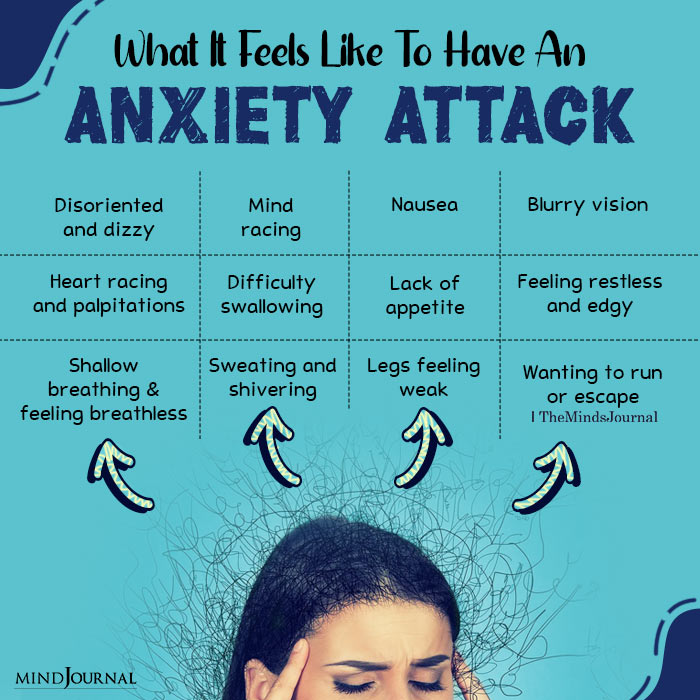
But before we can do that, we need to learn how to spot the signs of an anxiety attack.
How to identify anxiety attacks
Anxiety attacks or panic attacks are sudden and intense episodes of overwhelming fear or terror. They can occur unexpectedly or in response to a trigger, and can be very distressing and disruptive to daily life. Here are some common symptoms of panic or anxiety attacks:
1. Physical symptoms
Anxiety attacks can cause a range of physical symptoms, including –
- Chest pain or discomfort
- Rapid or pounding heartbeat (palpitations)
- Sweating
- Trembling or shaking
- Shortness of breath or feeling of choking or suffocation
- Nausea or gastrointestinal distress
- Dizziness, lightheadedness, or feeling faint or unsteady
- Hot or cold flashes
- Tingling or numbness in hands or feet
- Muscle tension or weakness
- Fatigue or exhaustion
2. Psychological symptoms
Anxiety attacks can also cause psychological symptoms, which may typically include the following –
- Feeling of impending doom or danger
- Sense of unreality or detachment from one’s surroundings
- Fear of losing control or going crazy
- Fear of dying or having a heart attack
- Feeling trapped or unable to escape
- Panic, terror, or extreme anxiety
Some people may also experience depersonalization or derealization, which is a feeling of being disconnected from one’s body or surroundings. These symptoms will help you learn how to help someone having an anxiety attack.
Related: 15 Effective Reminders For Anxiety That Will Help Comfort You
3. Behavioral symptoms
Anxiety attacks can also cause behavioral symptoms, such as –
- Avoiding situations or places that may trigger an attack
- Engaging in safety behaviors, such as carrying medication or avoiding physical activity
- Restlessness or pacing
- Hyperventilating or holding one’s breath
- Crying or sobbing
- Yelling or screaming
However, identifying only the symptoms will not allow you to learn how to help someone with anxiety attacks. There are some other factors that you need to consider in order to find out how to calm someone down having a panic attack –
4. Timing and duration
Anxiety attacks usually come on suddenly and reach a peak within minutes, although they can last for up to an hour. They can occur at any time, but may be more likely to occur during times of stress or in response to a trigger, such as a traumatic event or phobia.
5. Frequency
Anxiety attacks can occur once or twice in a person’s lifetime, or they can be a recurring problem. If a person experiences frequent anxiety attacks, it may be a sign of an underlying anxiety disorder, such as panic disorder, generalized anxiety disorder, or social anxiety disorder.
6. After-effects
After an anxiety attack, a person may feel exhausted or drained, and may have difficulty concentrating or functioning normally for a period of time.
If someone experiences any of these symptoms, then it is likely they are having a panic attack or anxiety attack. It is important to seek professional help. A mental health professional can help diagnose the underlying cause of your symptoms and develop a treatment plan that works for you.
Moreover, there are also self-care strategies that can help manage anxiety, such as exercise, mindfulness, and stress-reduction techniques. It is crucial to understand that while anxiety attacks can be very distressing, they are treatable.
With the right treatment and support, it is possible to manage anxiety and lead a fulfilling life.
Now let’s find out how to help someone having an anxiety attack.
Related: What A Panic Attack Feels Like: 3 Science-backed Ways To Cope
How to help someone with anxiety attacks
Once you have identified the signs of panic attacks and realize that someone is actually experiencing anxiety attacks, you can take the right steps to help them overcome the dreadful feeling.
However, it can be difficult to calm someone down during this experience as it can be challenging for you to be tactful and have the presence of mind to know exactly what you need to do.
So how can you help someone with anxiety? Fortunately, there are some practical steps you can take to help someone relax and calm down when they are going through a panic attack.
Here’s how to help someone with anxiety attacks-
1. Remain calm
Being calm, cool and supportive is the best thing you can do when trying to figure out how to calm someone down having a panic attack. Anxiety attacks typically do not last for a long time and even though the experience can be really intense, it can get over within 10 minutes. However, during an episode of anxiety attack, the sufferer may lose track of time as they become afraid and become terrified of dying.
So, if you really want to know how to help someone having an anxiety attack or how to calm someone down having a panic attack, please know that you need to stay calm and provide reassurance to the person. Let them know that they’re not alone and that you’re there to support them through the attack. Validating and reassuring them that they will be okay can make them feel safe and secure.
Panic attacks can be overwhelming and distressing, and your calm and reassuring presence can help the person feel more grounded and in control. This is how to help someone with a panic attack.
Here are some tips on how to remain calm when helping someone during a panic attack:
A. Take deep breaths
If you start to feel anxious or overwhelmed yourself, take a moment to take some deep breaths. This can help you regulate your own emotions and stay focused on supporting the person.
B. Speak in a calm and reassuring tone
Use a relaxed and reassuring tone when speaking to the person. A reassuring tone can help them feel more at ease and can reduce feelings of panic. This is how can you help someone with anxiety without too much difficulty.
C. Focus on the person’s needs
During a panic attack, the person may be feeling scared or overwhelmed. Focus on their needs and provide support based on what they tell you they need.
D. Use calming techniques
Encourage the person to take slow, deep breaths and engage in other calming techniques, such as progressive muscle relaxation or visualization. Learning about calming techniques is the key part of how to help someone having an anxiety attack.
E. Avoid judgment or criticism
It’s important to avoid judgment or criticism during a panic attack. Reassure the person that their feelings are valid and that you’re there to support them without judgment. Being non-judgemental is a vital trait to cultivate if you really want to master how to calm someone down having a panic attack or an anxiety attack.
F. Provide a safe and comfortable environment
Try to create a calm environment by reducing noise and distractions. You can also dim the lights or provide a blanket or other comfort item to help the person feel more secure. Safe and comfortable environment is very crucial when it comes to
Remember that panic attacks can be very intense and may take some time to pass. Your presence and support can make a big difference in helping the person feel safe and supported during this time. The above six tips are also helpful if you are trying to figure out how to help your partner with anxiety and depression. Remaining calm is just one of the steps in our journey to figure out how to help someone with anxiety attacks.
Related: What Is Anticipatory Anxiety And How To Stop Worrying About The Future
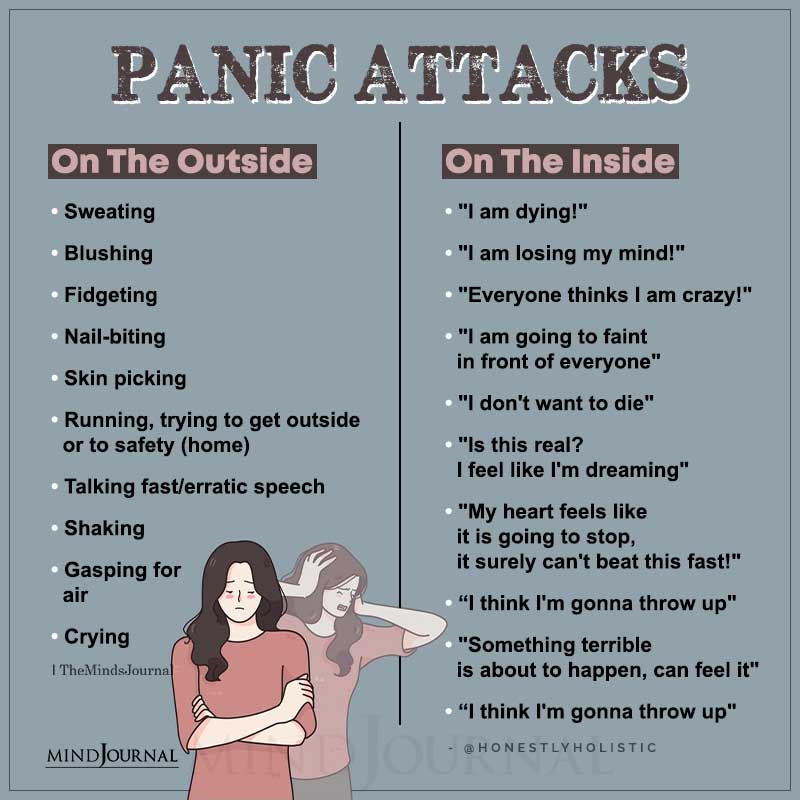
2. Encourage them to breathe
Encouraging someone to breathe can be a helpful technique in managing a panic attack. Panic attacks can cause rapid and shallow breathing, which can exacerbate feelings of anxiety and panic and make the experience worse. So it’s important to encourage the person to take slow, deep breaths.
By encouraging the person to take slow, deep breaths, you can help them regulate their breathing and reduce the severity of their symptoms. You can guide them through breathing exercises, such as counting to three on each inhale and exhale.
If you are wondering how can you help someone with anxiety, here are some tips on how to encourage someone to breathe during a panic attack:
A. Model deep breathing
Take some deep breaths yourself and encourage the person to breathe along with you. This can help them synchronize their breathing and feel more at ease.
B. Count to three
Encourage the person to take slow, deep breaths and count to three on each inhale and exhale. This can help them focus on their breathing and regulate their breaths.
C. Use imagery
Encourage the person to imagine that they are breathing in calm, peaceful energy and breathing out anxiety and tension. This can be a helpful visualization technique to reduce feelings of panic.
D. Alternate nostril breathing
This involves breathing through one nostril at one time. Encourage the person to close one nostril with their finger and inhale through the other nostril, then switch and exhale through the opposite nostril. Repeat this pattern for several minutes.
E. Diaphragmatic breathing
This technique involves breathing deeply from the diaphragm, rather than shallowly from the chest. Encourage the person to inhale deeply through their nose and exhale slowly through their mouth. As they exhale, ask them to imagine that they’re blowing up a balloon in their belly. This is how to help someone with ocd and anxiety.
F. 4-7-8 breathing
This involves inhaling for 4 seconds, holding your breath for 7 seconds & exhaling for 8 seconds. Encourage the person to repeat this pattern for several minutes, focusing on the counting and rhythm of their breath.
G. Box breathing
This technique involves inhaling for 4 seconds, holding the breath for 4 seconds, exhaling for 4 seconds, and holding the breath for 4 seconds. Encourage the person to repeat this pattern for several minutes, focusing on the square shape of the breath.
H. Breath focus
This technique involves simply focusing on the breath, without necessarily controlling or changing it. Encourage the person to breathe normally and simply observe the sensation of their breath moving in and out of their body. This can be a helpful mindfulness practice to reduce feelings of anxiety.
I. Practice regularly
Encourage the person to practice deep breathing regularly, even when they’re not experiencing a panic attack. This can help them develop a habit of calm and controlled breathing, which can be helpful in managing anxiety.
If you are learning how can you help someone with anxiety or panic attacks, remember that deep breathing may not work for everyone, and different techniques may work better for different people.
So it’s important to listen to the person and support them in the way that works best for them. Encouraging someone to practice deep breathing regularly can be helpful in managing anxiety and promoting relaxation.
Related: How To Help Someone With OCD and Anxiety
3. Help them focus
Panic attacks can cause a person to feel overwhelmed and disoriented. During an episode, their focus can be severely impaired due to the intense feelings of fear and anxiety. Help them focus by asking them to name things they can see, hear, touch, or smell. This can help ground them in the present moment and reduce feelings of panic.
As a friend or loved one, there are steps you can take to help them focus and regain a sense of calm –
A. Help them regulate their breathing
Rapid breathing, or hyperventilation, is a common symptom of panic attacks and can make the symptoms worse. Encourage the person to take slow, deep breaths, and to focus on breathing from their diaphragm. You can even guide them through a breathing exercise, such as inhaling for four seconds, holding for four seconds, and exhaling for four seconds. This can help to calm their body and reduce the intensity of the panic attack.
B. Use grounding techniques
Panic attacks can cause a person to feel disoriented and disconnected from their surroundings. Grounding techniques can help them feel more present in the moment. You can ask them to name five things they can see, four things they can touch, three things they can hear, two things they can smell, and one thing they can taste. This can help them focus on their surroundings and bring them back to reality.
C. Offer reassurance
Panic attacks can be frightening, and the person may feel as though they are losing control. Offer them reassurance so that they are safe. Let them know that you are there for them and that you will stay with them until the panic attack passes.
Reassure them that panic attacks are a common experience and that they will get through it. You can also remind them of times when they have successfully coped with similar situations.
D. Avoid judgment
It’s essential to avoid making judgments or dismissive comments when someone is experiencing a panic attack. Don’t tell them to “calm down,” or that their fears are irrational. Instead, acknowledge their feelings and offer your support. You can say things like, “I am here for you,” or “I know this is difficult, but we will get through it together.”
E. Help them identify triggers
Panic attacks can have triggers, which can be anything from certain situations to specific thoughts or memories. Help the person identify their triggers, so they can take steps to avoid them in the future. You can also help them develop coping mechanisms for when they do encounter these triggers.
However, if the person has a history of panic attacks, they may already have identified triggers that set them off. Ask them to figure out what triggered their anxiety attack so that they can take the right steps to calm down.
The above five steps are must-know if you are learning how to help your partner with anxiety and depression or how to help your friend or a neighbor during anxiety or panic attacks.
Helping someone focus during a panic attack requires patience, empathy, and understanding. Your support and understanding can go a long way in helping them cope with the symptoms and regain their focus.
But wait, we are not done yet. There’s more to learn when exploring how to help someone with anxiety attacks.
Related: What Concealed Anxiety Actually Feels Like
4. Create a calm environment
Building a calm environment can be a helpful strategy to manage and overcome panic attacks. Panic or anxiety attacks can be triggered by a range of factors, including stress, anxiety, and external stimuli such as loud noises or bright lights.
A calm environment can help to reduce the triggers that can contribute to panic attacks and promote relaxation and a sense of safety. So try to create a calm environment by reducing noise and distractions. You can also dim the lights or provide a blanket or other comfort item to help the person feel more secure.
A calm environment can provide the person with a sense of control and reduce the severity and frequency of panic attacks. Here are some ways that creating a calm environment can help someone overcome panic attacks:
i. Reducing anxiety and stress
A calm environment can reduce anxiety and stress levels, which are common triggers for panic attacks. By creating a quiet and peaceful space, you can help to lower the person’s stress levels and promote relaxation.
ii. Encouraging relaxation
A calm environment can encourage relaxation, which can help to alleviate the symptoms of a panic attack. Relaxation techniques such as deep breathing, meditation, and mindfulness can be particularly effective in reducing the severity and duration of panic attack symptoms.
iii. Reducing external triggers
External triggers such as loud noises, bright lights, and crowds can contribute to panic attacks. By creating a calm environment with low lighting and minimal external stimulation, you can help to reduce the triggers that can cause panic attacks.
iv. Promoting a sense of safety and security
Panic attacks can be a frightening and overwhelming experience, and creating a calm environment can promote a sense of safety and security. Providing comfort items such as a warm blanket or a comforting scent can help to soothe and calm the person during a panic attack. This is especially important when learning how to help your partner with anxiety and depression.
v. Enhancing coping skills
By creating a calm environment, you can help the person develop coping skills that they can use to manage their panic attacks. Encouraging relaxation techniques and mindfulness can be particularly helpful in promoting self-awareness and developing coping skills.
Related: How To Help Your Partner With Anxiety and Depression
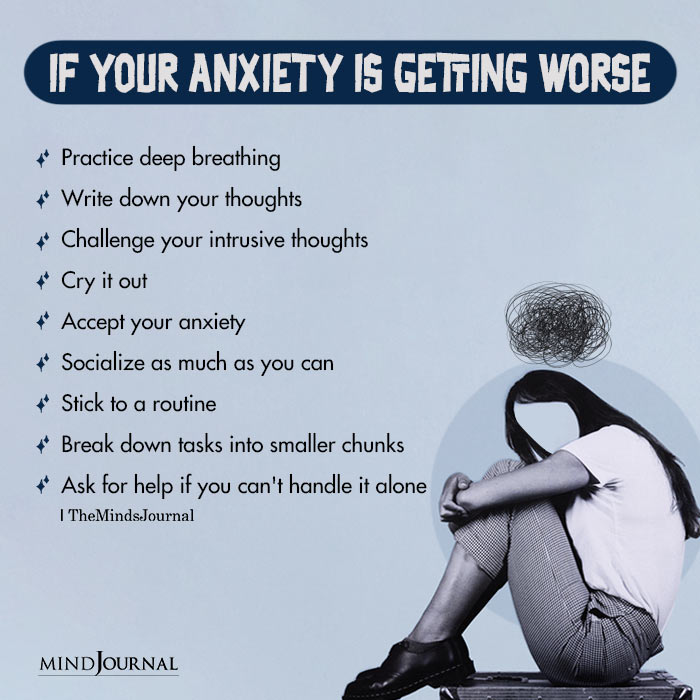
So how can you create a calm and safe environment for your loved one? Here’s how to help someone with anxiety attacks by creating a relaxing environment –
A. Find a quiet and private space
Comfort can be essential when someone is experiencing a panic attack. When someone is having an anxiety attack, it’s important to create a space where they feel safe and secure. Find a quiet and private space where they can sit or lie down without interruption.
This could be a comfortable chair, bed, or couch, a bedroom, a quiet corner of a living room, or a secluded outdoor area. Make sure the space is quiet and private, so they can relax without interruption. This is very important when figuring out how to help someone with ocd and anxiety.
B. Reduce external stimulation
Panic attacks can be triggered by external stimuli, such as loud noises, bright lights, or strong smells. In fact, loud noises can be overwhelming and can trigger panic attacks easily. To create a calm environment, reduce noise as much as possible.
Try to reduce external stimulation as much as possible to create a calm environment. Turn off the TV or radio, close windows to block out traffic sounds, and use dim or warm-colored lighting. Remember this is an important step when you are trying to learn how to help someone with a panic attack.
C. Dim the lights
Bright lights can be overstimulating and contribute to anxiety. To create a calming environment, dim the lights or use soft, warm-colored lighting. This can create a relaxing ambiance and help to reduce stress.
D. Encourage slow and deep breathing
Rapid breathing, or hyperventilation, is a common symptom of panic attacks and can make the symptoms worse. Encourage the person to take slow, deep breaths, and to focus on breathing from their diaphragm. You can even guide them through a breathing exercise, such as inhaling for four seconds, holding for four seconds, and exhaling for four seconds. This is a simple and quick step in the journey of how to help someone with a panic attack or an anxiety attack.
E. Offer soothing activities
Activities that are soothing and calming can help to distract the person from their panic attack and create a sense of relaxation. You can offer activities such as listening to calming music, practicing yoga or meditation, or engaging in a calming hobby like knitting or coloring.
F. Use aromatherapy
This is one of the quick fixes that you will find in the guide on how to help someone with a panic attack. Certain scents can be calming and help to reduce anxiety. You can use essential oils or scented candles to create a calming environment. Lavender, chamomile, and peppermint are scents that are known for their calming effects.
G. Provide comfort items
Providing comfort items can help the person feel safe and secure. This could be a soft blanket, a favorite stuffed animal, or a comforting item of clothing. You could also offer them a warm drink, such as herbal tea or warm milk, to help them feel more relaxed.
H. Be present
The most important thing you can do to create a calming environment is to be present and offer support. Let the person know that you are there for them and that you will stay with them until the panic attack passes.
I. Offer reassurance
Panic attacks can be frightening, and the person may feel as though they are losing control. Offer them reassurance that they are safe and that you are there for them. Let them know that panic attacks are a common experience and that they will pass. You can also remind them of times when they have successfully coped with similar situations.
Creating a calm environment can be an effective way to help someone overcome panic attacks. By creating a calming environment, you can help the person feel safe and secure, and reduce the triggers that contribute to their panic attacks.
Still wondering how to help someone with anxiety attacks? Read on.
Related: 11 Things People With Anxiety Want You To Know
5. Avoid judgment or criticism
It’s important to avoid judgment or criticism during a panic attack. Reassure the person that their feelings are valid and that you’re there to support them without judgment. Anxiety attacks can be a debilitating and overwhelming experience, and it is important to provide support and understanding to the person experiencing them.
People experiencing anxiety attacks are often already feeling a high level of anxiety and fear. If they feel judged or criticized, it can worsen their symptoms and trigger more intense panic or anxiety as they may feel unsupported, misunderstood, or alone. Moreover, if a person feels judged or criticized, they may be hesitant to seek help or support.
This can result in them struggling alone with their anxiety, which can have severe consequences on their mental and physical health. This step is crucial when figuring out how can you help someone with anxiety,
Here are some tips on how to avoid judgment or criticism when helping someone with anxiety attacks:
A. Listen without interrupting
Give the person your full attention and listen actively without interrupting. Avoid being dismissive or critical of their experiences.
B. Avoid belittling their experiences
How can you help someone with anxiety, when you have no respect for their lives and their sufferings? Avoid minimizing or belittling the person’s experiences. Acknowledge the person’s feelings and experiences, and let them know that you understand how challenging and overwhelming anxiety attacks can be.
C. Focus on practical solutions
Offer practical solutions to help the person cope with their anxiety attacks. Encourage them to seek professional help, such as therapy or medication, and suggest strategies such as deep breathing, mindfulness, or progressive muscle relaxation.
D. Practice empathy
Try to put yourself in the person’s shoes and imagine how they may be feeling. Practice empathy by acknowledging their feelings and validating their experiences.
6. Encourage them to seek professional help
If you are eager to learn how to help someone having an anxiety attack, practice encouraging them to seek professional help. While providing support and understanding can be helpful, professional treatment can provide the person with the tools and resources they need to manage their anxiety attacks more effectively.
A mental health professional can help diagnose the underlying cause of the panic attacks and develop a treatment plan that works for them. Seeking professional help can provide the person with access to evidence-based treatments such as therapy, medication, or a combination of both.
Professional help can also help to identify any underlying mental health conditions that may be contributing to anxiety attacks. While family and friends can provide valuable support, seeking professional help can provide ongoing support and guidance. Professionals can help the person develop coping skills, provide education about anxiety attacks, and offer support during challenging times.
When you want to learn about how can you help someone with anxiety or panic attacks, try the below tips to encourage others to seek professional help:
A. Normalize seeking help
How can you help someone with anxiety, if you can’t normalize seeking help? Let the person know that seeking professional help for anxiety attacks is common and normal. Encourage them to view seeking help as a positive step towards improving their mental health.
B. Provide education about professional help
Educate the person about the different types of professional help available, such as therapy or medication. Discuss the benefits of seeking professional help and let them know that it can be a valuable resource in managing anxiety attacks.
Related: How To Deal With Anxiety: 3 Simple Steps To Cope
C. Offer support during the process
Offer to help the person research potential treatment options, accompany them to appointments, or provide emotional support throughout the process. Let them know that you are there to support them during this challenging time.
D. Avoid pressure or coercion
While it is important to encourage seeking professional help, it is essential to avoid pressuring or coercing the person into seeking treatment. Respect their autonomy and allow them to make their own decisions about seeking professional help.
E. Be patient and understanding
Seeking professional help can be a daunting process, and the person may need time and support to feel comfortable with the idea. Be patient and understanding, and let them know that seeking professional help is a positive step towards improving their mental health.
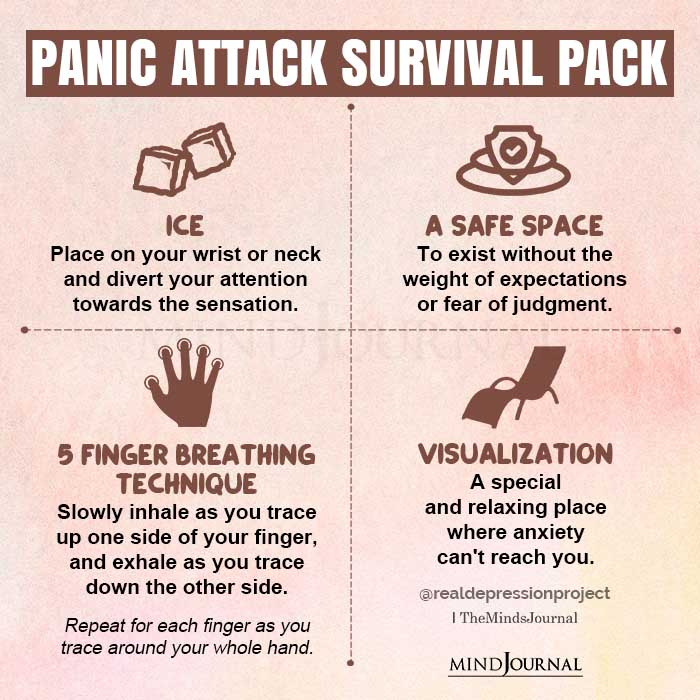
Professional help can provide effective treatment, ongoing support, and improve the person’s quality of life.
Things to keep in mind
Apart from the helpful strategies mentioned above, here are some things that you should keep in mind when learning how to help someone with anxiety attacks –
- Offer words of encouragement and let them know you are there for them.
- Listen to the person and validate their feelings.
- Don’t minimize the person’s feelings.
- Use calming phrases like “breathe in, breathe out.”
- Offer a glass of water or a cold compress if needed.
- Ask if they need any medication and if they have any with them.
- Don’t force the person to talk about their feelings if they don’t want to.
- Offer a distraction like music, a calming app, or a favorite TV show.
- Stay with the person until they feel better or have someone else take over.
- Don’t make assumptions about what the person needs or wants.
- Be patient and offer support without taking over.
- Make sure to give them some space while staying with them.
- Avoid using negative language like “this is a bad panic attack.”
- Don’t take their symptoms personally or become offended if they lash out.
- Don’t downplay their symptoms or tell them to “just get over it.”
- Don’t tell the person that they are being irrational or overreacting.
- Be aware of your body language and tone of voice.
- Respect the person’s boundaries and needs.
- Be mindful of any triggers that may be present.
- Offer to help the person create a plan for coping with future panic attacks.
- Know when to seek professional help from a mental health provider.
- Know what to say, such as “Tell me how I can help you,” “I know it’s scary, but it is just a thought. I am here with you.”
- Be supportive even when their panic attack seems irrational or doesn’t make sense.
- Avoid overwhelming the person with too much information or advice.
- Stay present and focused on the person’s needs at the moment.
- Provide information on self-care practices like exercise, mindfulness, and journaling.
- Recognize that recovery from panic attacks is a process that takes time.
- Celebrate small victories with the person and offer praise and encouragement along the way.
Remind the person that they are not alone and that you are there to support them, especially when learning how to help your partner with anxiety and depression.
Things to avoid
Just like there are certain things you must remember when helping a loved one overcome panic attacks, there are also several things you must avoid when trying to figure out how to help someone with anxiety attacks or panic attacks. Here’s what you shouldn’t do –
- Don’t dismiss their feelings or tell them to “just calm down.”
- Don’t force them into situations that trigger their panic attacks.
- Don’t make them feel ashamed or embarrassed about their panic attacks.
- Don’t invalidate their experiences or tell them it’s “all in their head.”
- Don’t belittle their condition or compare it to your own experiences.
- Don’t make them feel guilty for having panic attacks.
- Don’t pressure them to talk about their panic attacks if they’re not ready.
- Don’t try to minimize their symptoms or tell them it’s not that bad.
- Don’t assume you know what they’re going through if you haven’t experienced panic attacks yourself.
- Don’t offer unsolicited advice or suggest they just need to “think positively.”
- Don’t judge them for needing medication or therapy to manage their panic attacks.
- Don’t make them feel like they’re a burden or inconvenience to you.
- Don’t tell them to “get over it” or “toughen up.”
- Don’t push them to face their fears before they’re ready.
- Don’t make assumptions about what they need or want from you.
- Don’t interrupt them or talk over them when they’re trying to communicate.
- Don’t pressure them to socialize or go out if they don’t feel up to it.
- Don’t offer unhelpful platitudes like “everything happens for a reason.”
- Don’t give up on them or stop supporting them because their condition is difficult to understand.
- Don’t make them feel guilty for canceling plans or backing out of commitments because of their panic attacks.
- Don’t make them feel like they’re weak or inferior because they have panic attacks.
- Don’t treat them differently or with kid gloves because of their condition.
- Don’t make assumptions about what they can or can’t handle.
- Don’t tell them to “just breathe” or use other simplistic coping strategies.
- Don’t try to fix their panic attacks or make them go away; instead, focus on supporting them and helping them manage their symptoms.

Your support can mean a lot
A little help and support can make a lot of difference to someone experiencing a panic attack.
However, helping someone with anxiety attacks requires empathy, understanding, and patience.
Instead minimizing their experiences or pressuring them to face their fears, offer support, listen without judgment, and help them find the professional resources they need to manage their symptoms. With the right approach, you can make a positive difference in the life of someone struggling with anxiety.
Related: Mindfulness Meditation For Panic Disorder Relief
Did you enjoy reading our detailed guide on how to help someone with anxiety attacks and how to calm someone down having a panic attack? Let us know in the comments below!


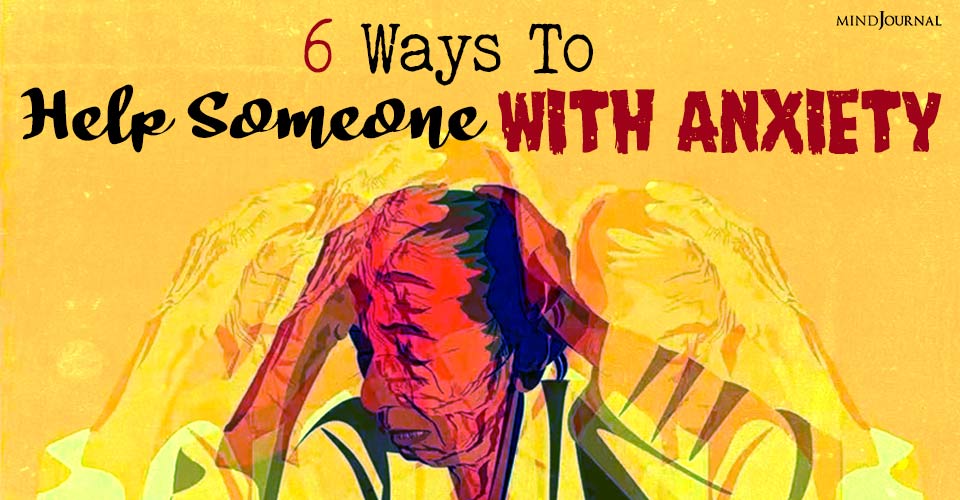
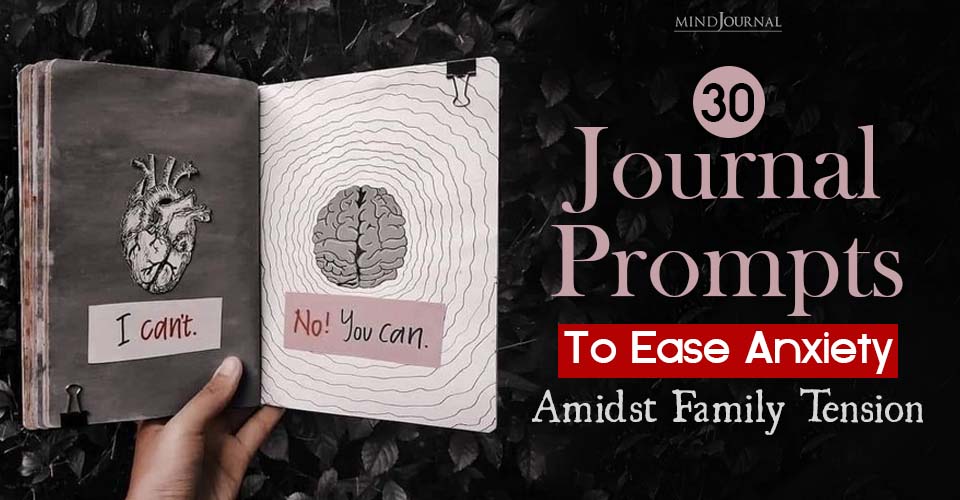
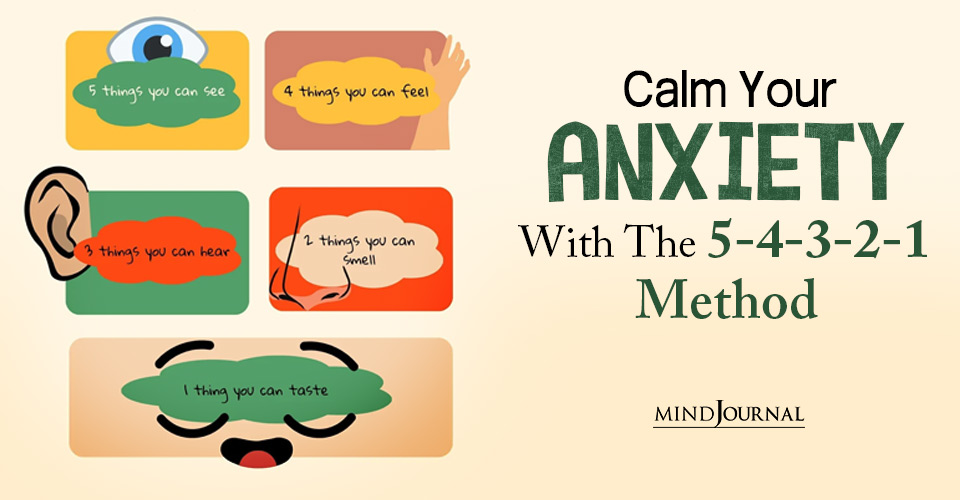

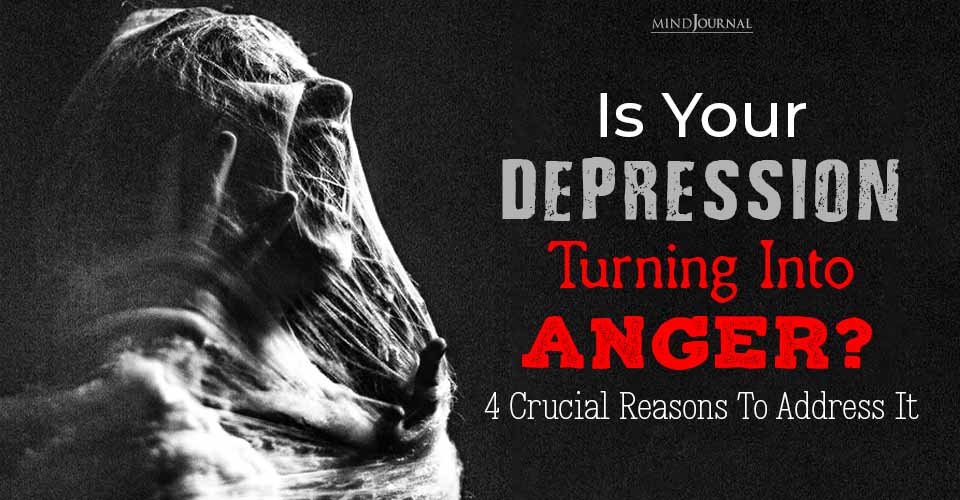



Leave a Reply